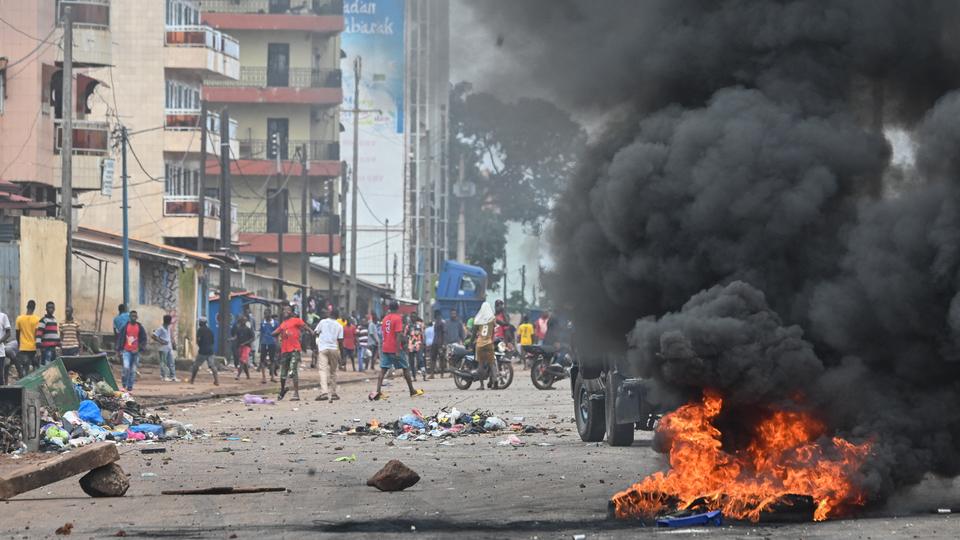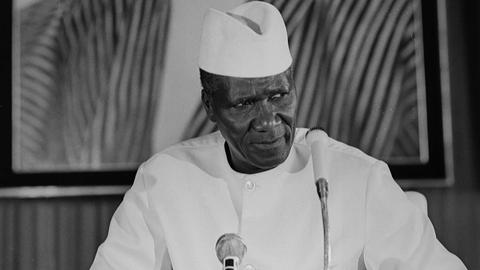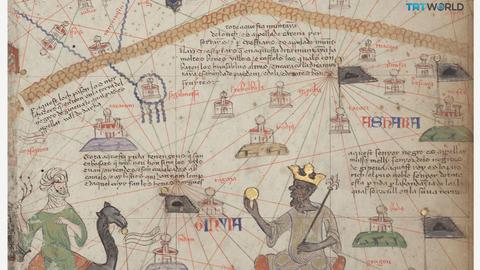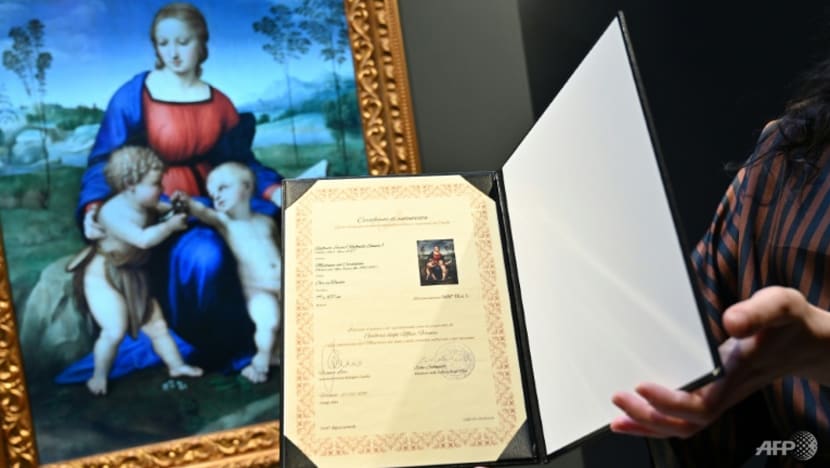Men and women in colourful traditional outfits assembled outside the marble palace on the hills of Nongoma, a small town in KwaZulu-Natal province, the Zulu heartland.
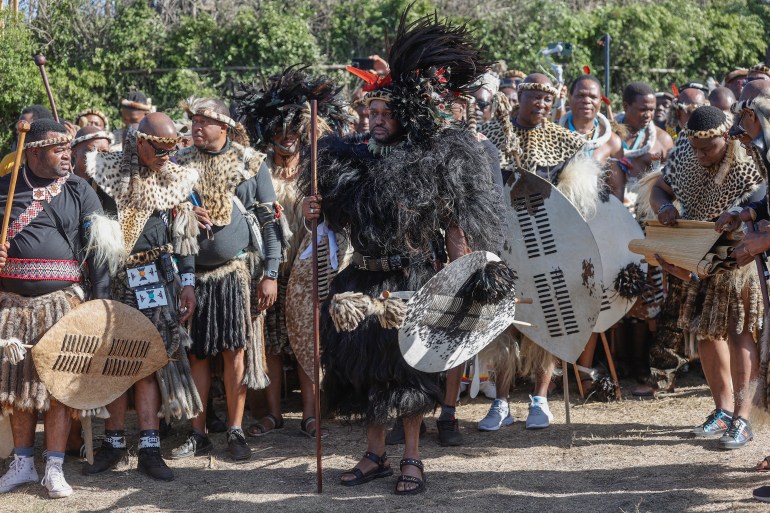
Published On 20 Aug 2022
Thousands of people gathered at the Zulu royal palace in South Africa for the coronation of a new king in the country’s richest and most influential traditional monarchy.
Misuzulu Zulu, 47, is set to succeed his father, Goodwill Zwelithini, who died in March last year after 50 years in charge, but a bitter succession dispute threatened to overshadow the ceremony.
Although the title of king does not bestow executive power, the monarchs wield great moral influence over more than 11 million Zulus, who make up nearly one-fifth of South Africa’s population.
Men and women in colourful traditional outfits assembled on Saturday outside the marble palace on the hills of Nongoma, a small town in the southeastern province of KwaZulu-Natal, the Zulu heartland.
Tens of thousands more were expected to arrive to honour the new sovereign.
“Today, the king will be acknowledged by the whole Zulu Nation,” said Misuzulu’s sister, Princess Ntandoyesizwe Zulu, 46.
Yet, an acrimonious family dispute over the throne raged.
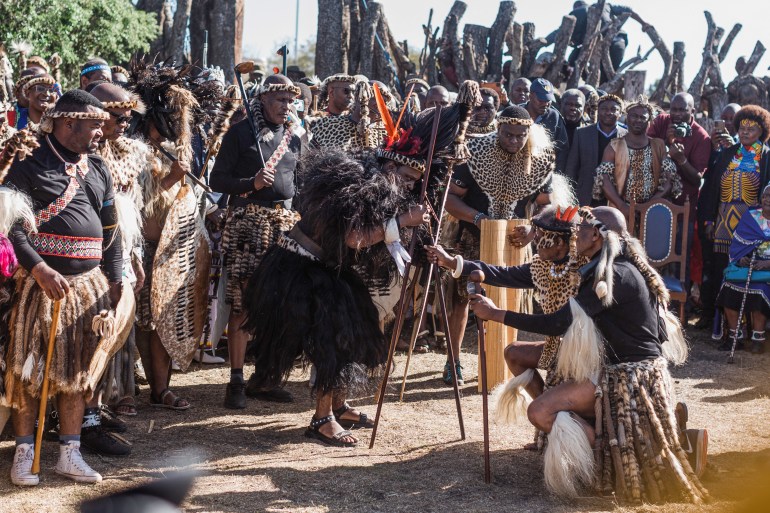
Thousands of people gathered at the Zulu royal palace in South Africa on Saturday [Rajesh Jantilal/AFP]
Coronation rites
In Nongoma, lines of Zulu warriors, known as Amabuthos and holding spears and shields of animal skin, marched into the palace grounds.
Women – in pleated skirts and beaded belts or draped with fabrics bearing the effigy of the sovereign – sang and danced.
On Friday night, Misuzulu entered the palace’s “cattle kraal” where he took part in a secret rite designed to present the new monarch to his ancestors.
Only select members of the royal family and Amabuthos were allowed in the enclosure which is protected from curious eyes by a thick fence of tree trunks.
“It’s a holy place, we can’t reveal to the world what is happening there,” said Muntomuhle Mcambi, 34, an amaButho.
Earlier this week, the soon-to-be king also killed a lion at a nearby reserve – in one of the last steps before the coronation.
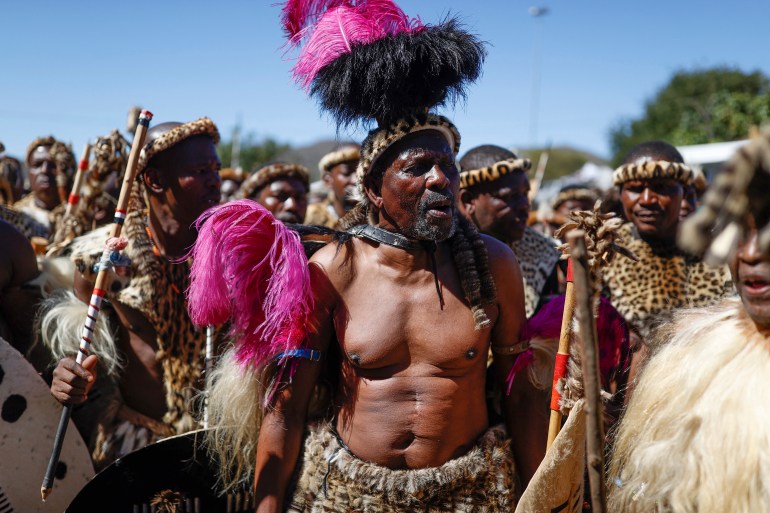
Family spat
His path to the crown has not been smooth. King Zwelithini left six wives and at least 28 children when he died last year.
Misuzulu is the first son of Zwelithini’s third wife, who he designated as regent in his will. But the queen died suddenly a month later, leaving a will naming Misuzulu as the next king – a development that did not go down well with other branches of the family.
Queen Sibongile Dlamini, the late king’s first wife, has backed her son Prince Simakade Zulu as the rightful heir. Some of the late king’s brothers have put forward a third prince as their candidate for the throne.
Queen Sibongile’s legal bid to challenge the succession was revived on Friday as she was granted the right to appeal a previous unfavourable ruling.
On Saturday, two of her daughters filed an urgent application to stop all rituals pending the appeal.
“Those who are Zulu and know the traditions know who is the king,” said Themba Fakazi, an adviser to the previous ruler who supports Misuzulu.
The next Zulu monarch will inherit a fortune and tap into a rich seam of income. Zwelithini received some 71 million rand ($4.2m) a year from the government and owned several palaces and other properties.
A royal trust manages almost three million hectares (7.4 million acres) of land – an area about the size of Belgium.
President Cyril Ramaphosa, who in March recognised Misuzulu as the rightful king, is to formally certify the crowning at a ceremony in the coming months.
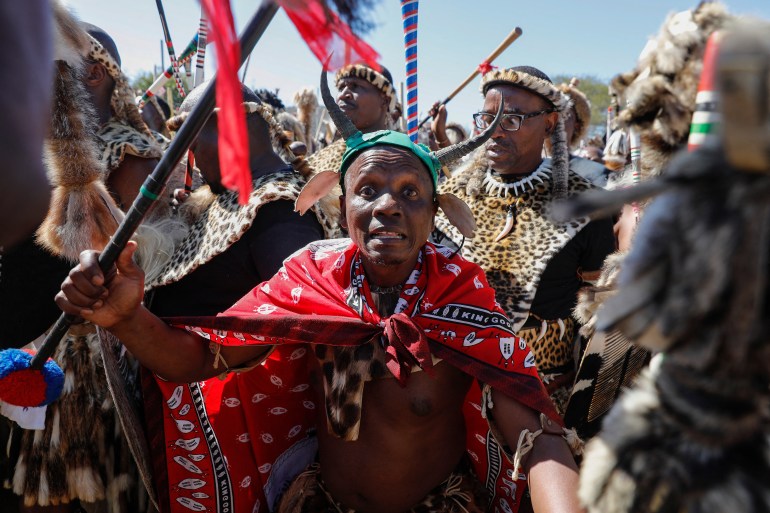
SOURCE: AFP






